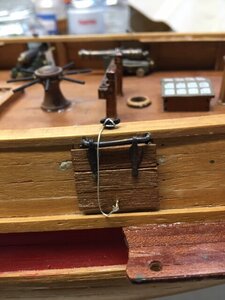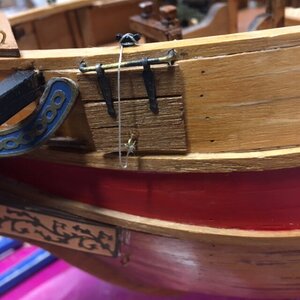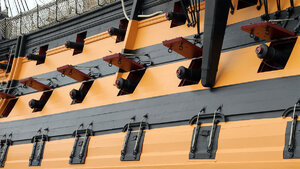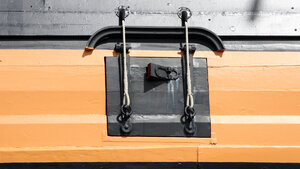I'm wondering what the best way is of making the thinner 0.25mm threads hang and drape realistically. Coils and hanks done with dilute PVA i can do, it's the single strands that have the gravity-defying capabilities of nylon monofilament. Currently trying to get the gun-port lanyards to hang when the port is shut. I'm putting the rearmost guns lashed down and the ports need to be shut. See the photos of what I've managed so far, a combination of CA & PVA. What does beeswax do? I've seen people referring to drawing the thread through a block of it, but I'm not clear what the purpose is.












